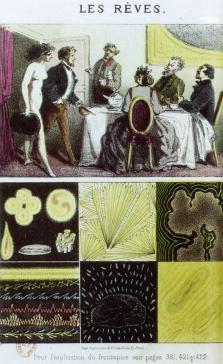This project analyzed the rise of the scientific study of dreams in the nineteenth and twentieth century. Within a new scientific culture of objectivity, dreams posed a challenge: since they appear in the sleeper’s mind as fleeting phenomena and can only be known after awakening, they could hardly be considered as observable objects; and more disturbingly, their irregular, immoral, and irrational aspects threatened the unity of the observer.
The project focused on practices of observation of dream research in three overlapping eras: during the first period, the dream became the object of a new regime of self-observation in which men of letters methodically recorded and collected their own nocturnal visions. In the second period, the research on dreams gradually moved away from these method by placing the emphasis on collective and comparative studies, often with the use of statistics, and by a strong association with the physiological investigation of sleep.
The method of self-analysis, the practical treatment of the dream as a narrative seems to set Freudian psychoanalysis apart from the objectifying practices of dream research. However, during the third stage, which sees the parallel rise of psychoanalysis and of dream studies within the sleep laboratory, various significant overlaps between the two fields could be traced. By reconstructing the attempts at objectifying dreams, the project thus not only to brought to the fore the specificities of the cross-disciplinary field of dream research, but also offered historical and epistemological elucidations of the current ambitions voiced in this field.

